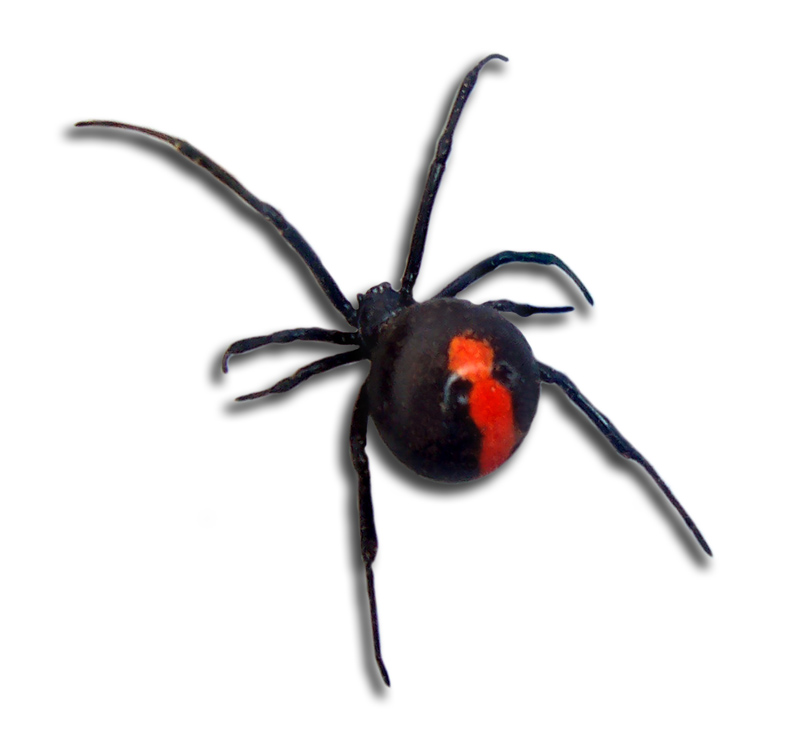

Female black widows usually live up to a year and a half. Females, on the other hand, only take about 90 days to mature. In part, this is because females sometimes eat a male after mating takes place. Only one to twelve spiders from an egg sac actually live to be 30 days old.Īfter males are born, it takes about 70 days for them to mature, and then they die after about a month to two months. Incubation lasts about 14 days, and the young spiders are cannabalistic. Within a given summer, a female may make between 4 and 9 egg sacs. The egg sac can either be tan or white, and usually has a paper-like texture. A single egg case is about 1 cm in diameter. A single bunch of eggs is suspended in a web so that nothing happens to to the eggs before they hatch. After the female and male mate in this way, the female lays several bunches of eggs, which contain about 750 eggs. Afterwards, he searches for a female so that he can place the sperm into the female's genital opening. He then takes the sperm into special receptacles on the ends of his pedipalps. First, a male black widow spins a very small web, and then he places a drop of sperm on the web or the silk. During this time, males do not bite or feed. Average length female, 3.5 cm males, 1.25 cm inĪdult male black widows wander around in search of a female.Mature black widows can vary in the amounts of red and white on their bodies. As they get older, they slowly turn black. Newly hatched black widows are white, but can sometimes be a yellowish-white.

Males have yellow and red bands and spots dorsally. Their bodies are smaller, but they have longer legs than the females. Females measure an average of 3.5 cm in length, and typically have a very round abdomen.Īdult males are half the size of females. Black widows are most commonly recognized because of the reddish hourglass shape on the underside of the abdomen. ( Desert USA, 1996 Jones, 1991)Īdult female black widow spiders are usually black and shiny. If a person happens to find an egg sac, it should be removed with an object other than one's hand. in order to prevent black widows from invaiding a home, home owners should remove materials where these animals can hide. When the weather changes from warm to cold, black widows are most likely to find places inside of homes in which to live or spin their webs. Webs are sometimes built inside trash cans, piles of trash, as well as under or around houses. Webs are usually built near to the ground. ( Desert USA, 1996 Encyclopedia Britanica, 1999-2000 Vest and Eagle Rock Research, 1999)īlack widow spiders live under ledges, rocks, plants, and different types of debris. This species can be found in all four of the deserts of the American southwest. Dogs resist redback venom, but cats, guinea pigs, camels, and horses are susceptible and benefit from the antivenom.Westerm black widow spiders, Latrodectus hesperus, live in the warmer regions of the United States. However, children, pregnant women, and elderly people may seek medical attention. Redback spider bites are not considered a medical emergency for healthy adults.


The bites rarely result in infection, seizure, respiratory failure, or pulmonary edema and never cause tissue necrosis. Symptoms appear between an hour to 24 hours and include pain, swelling, and redness from the bite site. When venom is used, a syndrome called latrodectism occurs. Juvenile and adult females can deliver either dry bites or venom. While males bite, they don't cause significant symptoms. Antivenom isn't actually more helpful than a standard analgesic for most human bites, but is effective for pet and livestock bites. However, only one human death has been reported since an antivenom became available in 1956. Redback spiders bite between 2,000 and 10,000 people in Australia annually.


 0 kommentar(er)
0 kommentar(er)
